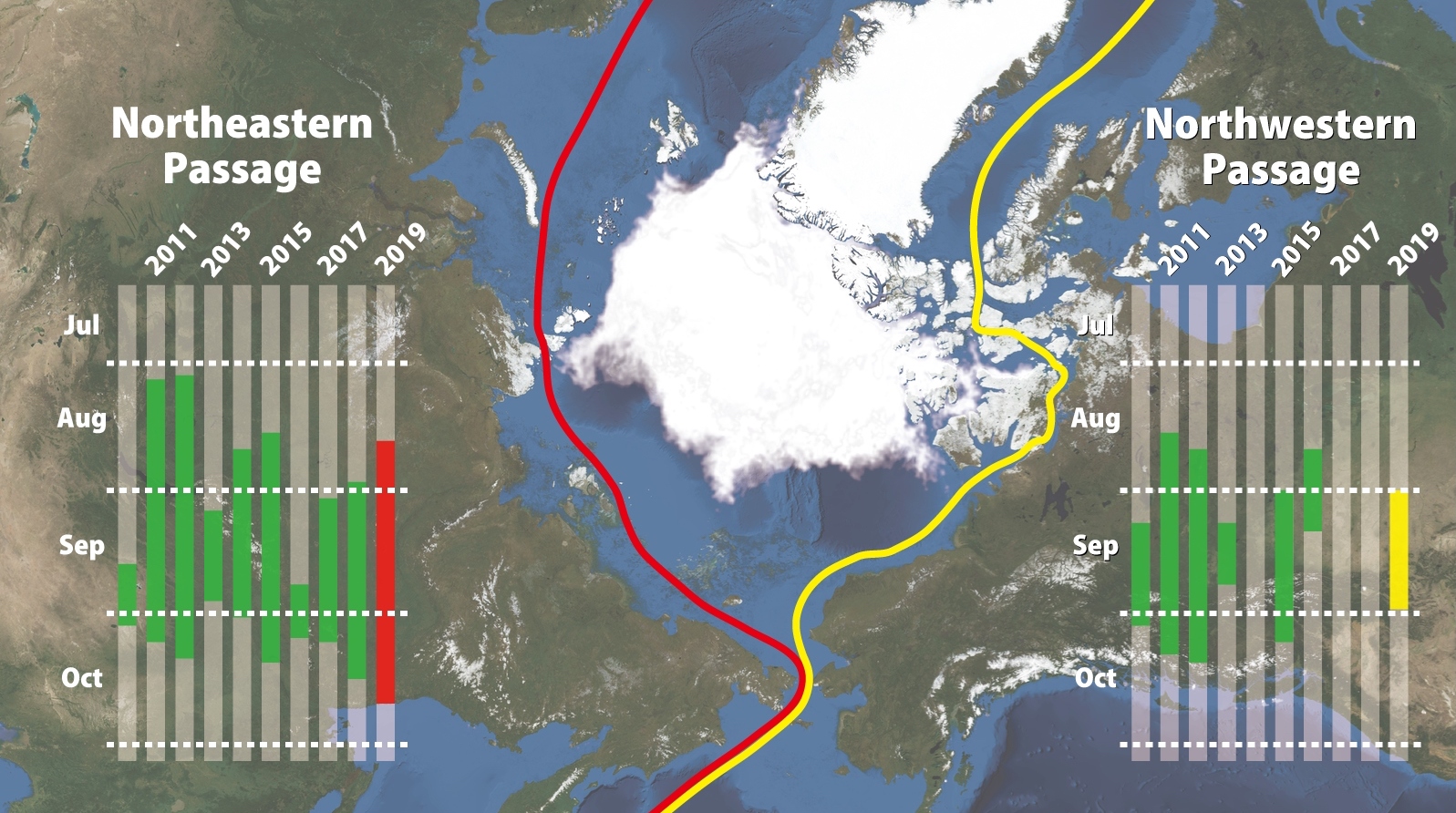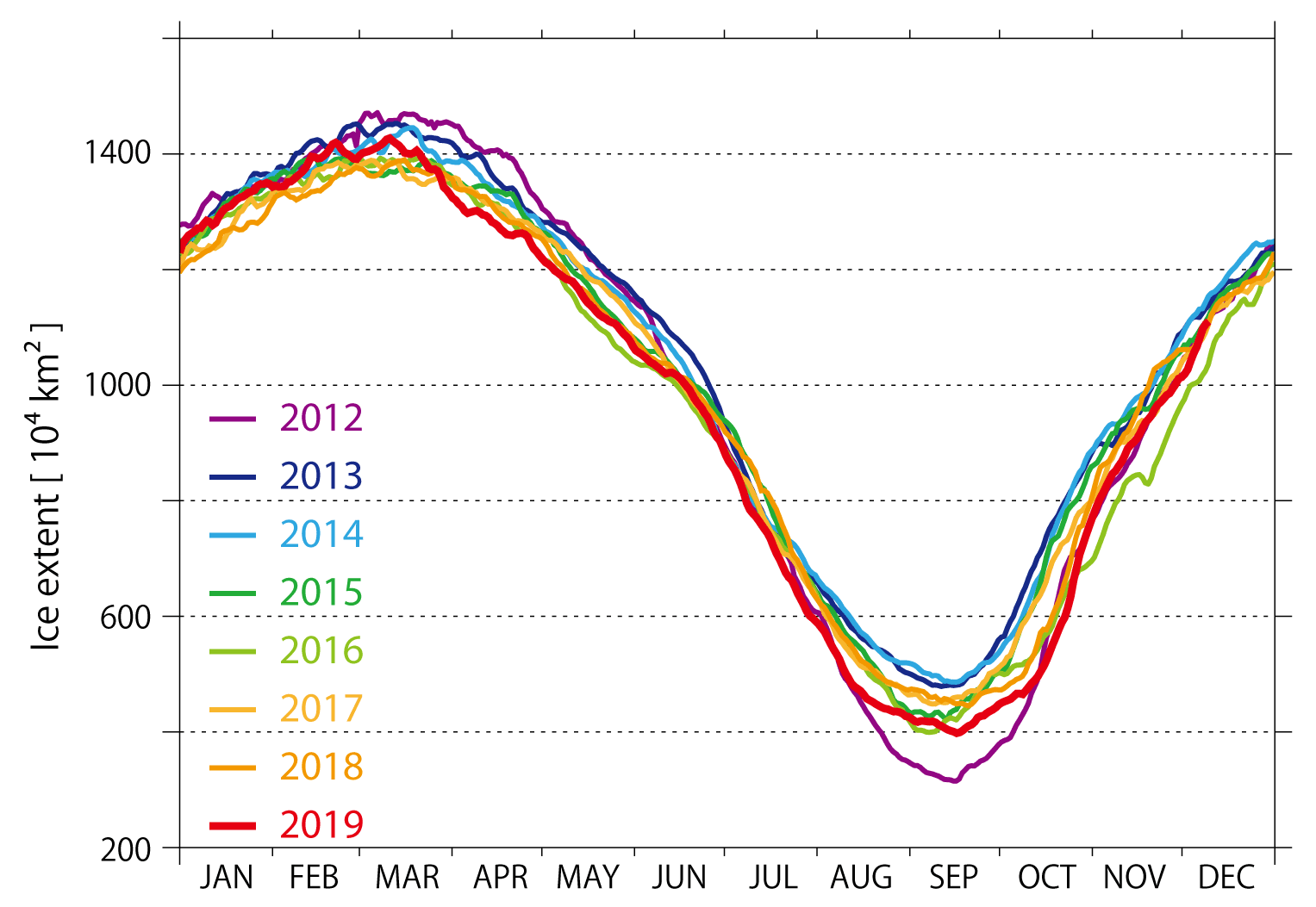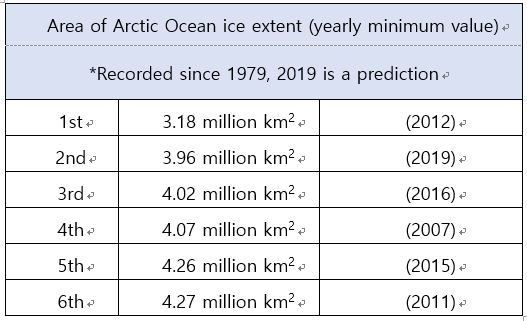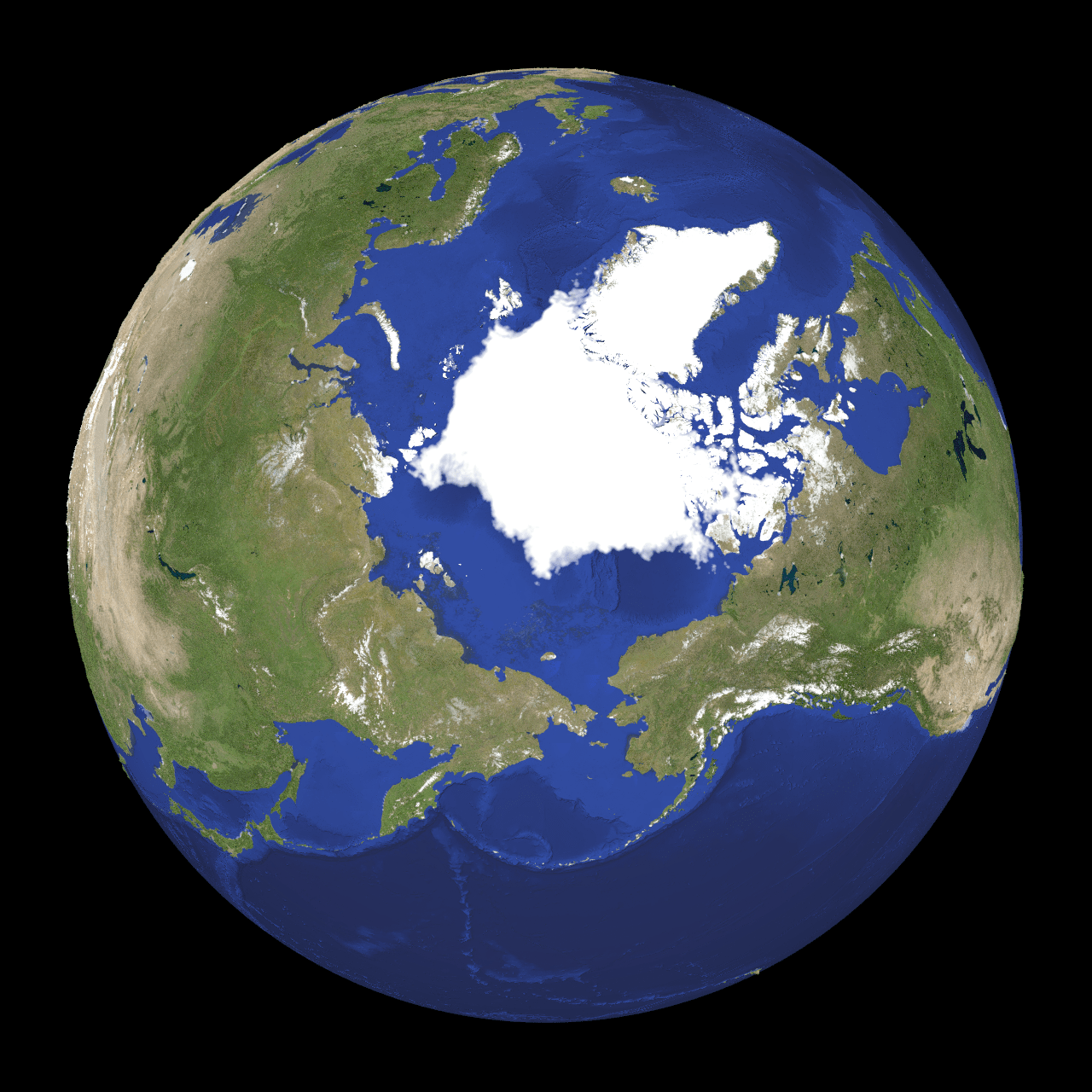News & Press Release
Weathernews Looks Back on Sea Ice in the Arctic Sea in 2019
Summer Heat Results in the Second Smallest Sea Ice Area on Recorded
Shipping >Weathernews Inc. Global Ice Center announced its review of Arctic Sea ice conditions during 2019. Sea ice is usually at its peak surface area in February or March of each year, and at its smallest in September. This summer, the Arctic region saw record-breaking heat, and from the Laptev Sea to the Beaufort Sea, the sea ice area decreased at the fastest rate in the history of observation. In addition, the year's smallest sea ice area was observed in September, at 3.96 million square kilometers, which was the second smallest in the history of observation.
The Northeast Passage (Russian side) of the Northern Sea Route (NSR) was open (*) this year from August 20th to October 21st—the latest date it has ever stayed open. In addition, the Northwest Passage (Canadian side) was open for the first time in three years, from September 1st to September 29th.
For voyages between Asia and Europe, using the NSR reduces not only transportation costs but also CO2 emissions. Since 2011, Weathernews has provided Polar Routeing Service to support the safe operation of vessels navigating the Arctic Ocean. In 2019, we provided support for 13 voyages, contributing to an emissions reduction of approximately 12,500 tons of CO2 compared to routing the ships through the Suez Canal. Going forward, we will continue to support the safe navigation of vessels through the Northern Sea Route, while also focusing on reducing CO2 emissions.
* Definition of "open": A state in which the entire route can be traversed without entering any areas affected by sea ice, according to satellite data.

Northeast Passage (Left) and the Northwest Passage (Right)
Record-breaking summer heat caused sea ice to melt at the fastest rate ever observed
This summer the Arctic experienced record-breaking high temperatures, accelerating the melting of sea ice. According to the University of California, the average temperature in August north of 70°N was the highest in 40 years, and the average temperatures in June and September were also the second highest on record. As a result, the melting of sea ice has progressed further than usual, and in the area from the Laptev Sea to the Beaufort Sea in particular, the sea ice area decreased at the fastest rate since observations began.
 |  |
This year, the sea ice area peaked at 14.27 million square kilometers on March 12, and the minimum was 3.96 million square kilometers on September 17. This was the second smallest sea ice area recorded since observations began in 1979, next to the record set in August 2012, which was influenced by a huge cyclone generated over the Arctic Ocean.
The Northeast Passage (Russian side) opened up on August 20th, about 10 days earlier than in 2018. It remained open for 2 months until October 21st, which is the latest date it has ever been open. The increase in not only the ambient temperature, but also the seawater temperature, due to global warming, contributed to the delayed formation of sea ice. The opening of the Northwest Passage was confirmed on September 1st, when the sea ice in the Canadian archipelago melted for the first time in three years. The open period continued for almost one month, until September 29th.
Weathernews supports safe navigation through the Northern Sea Route and helps reduce CO2
Regular use of the NSR has increased in recent years, and LNG carriers are active in transporting liquefied natural gas produced in the Arctic Ocean. For ships traveling between Asia and Europe, taking the NSR reduces the travel distance to about two-thirds that of traveling via the Suez Canal, and around half that of the Cape of Good Hope route.
Since 2011, Weathernews has provided Polar Routeing Service to support the safe operation of vessels in the Arctic Ocean. In 2019, we provided support for 13 voyages, contributing to an emissions reduction of approximately 12,500 tons of CO2*, compared to when the ships traveled via the Suez Canal.

